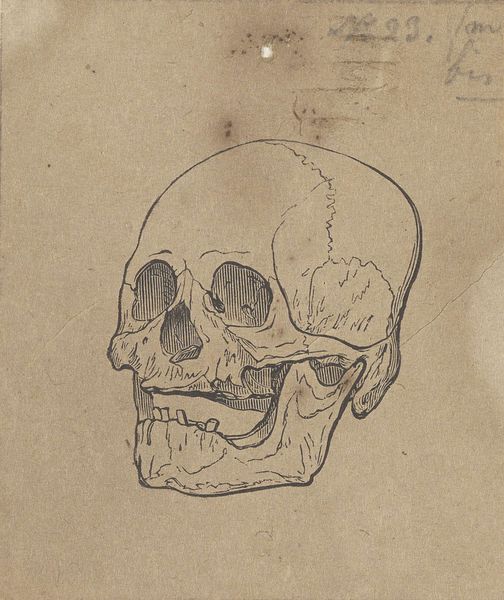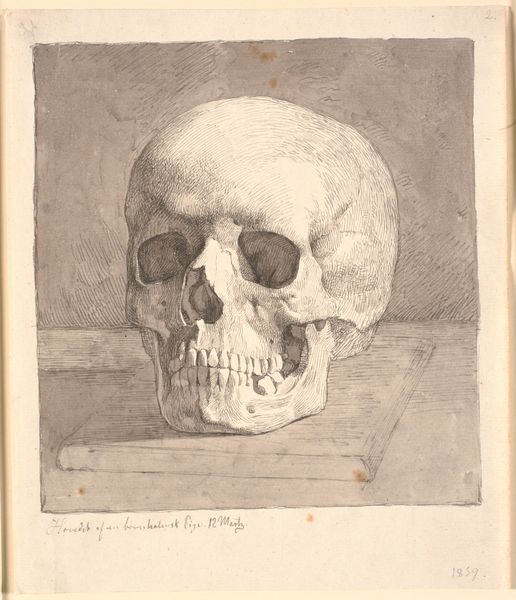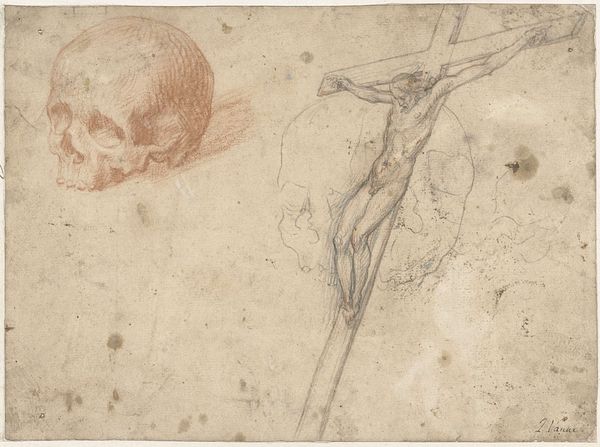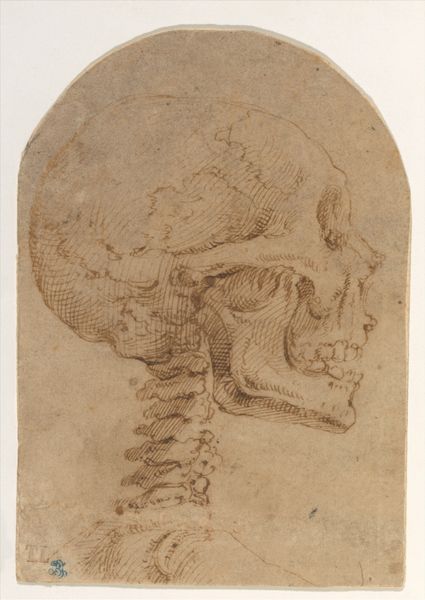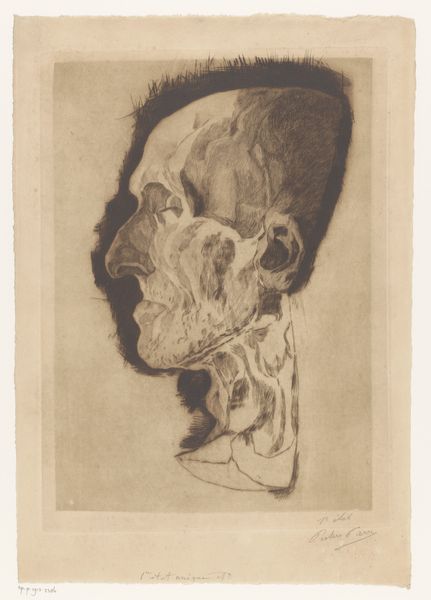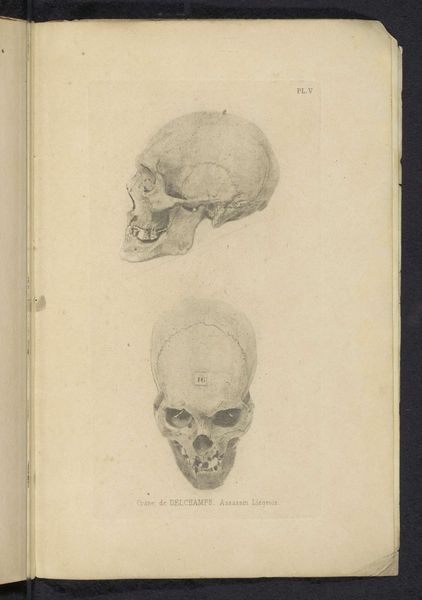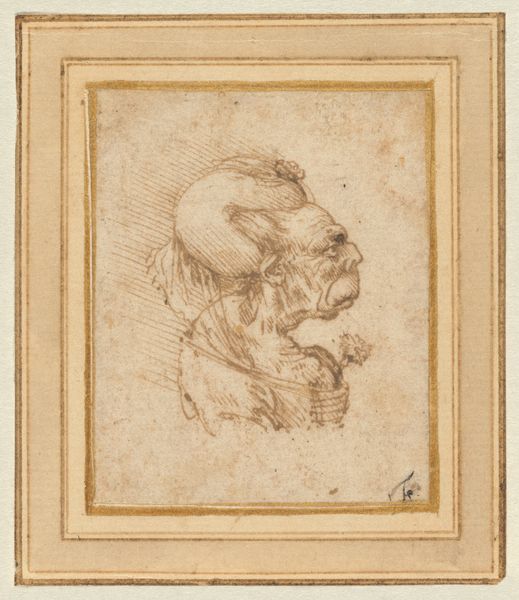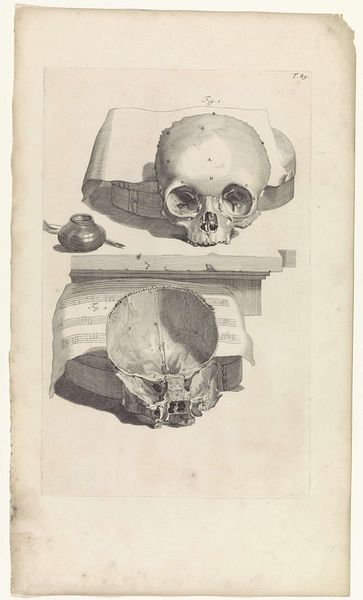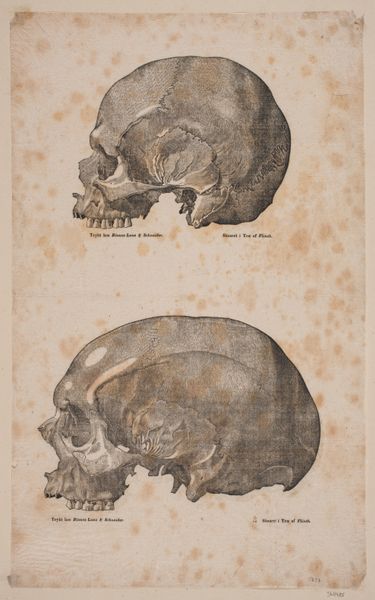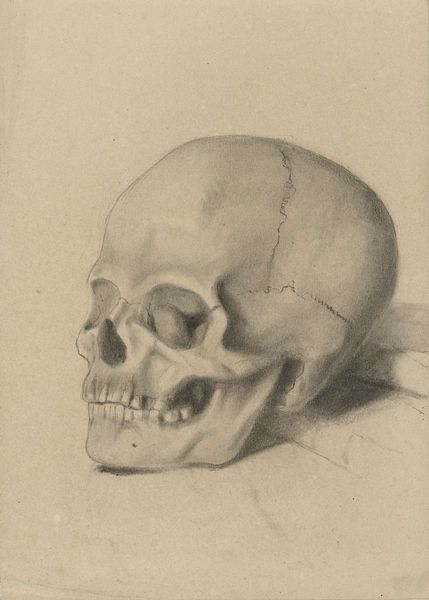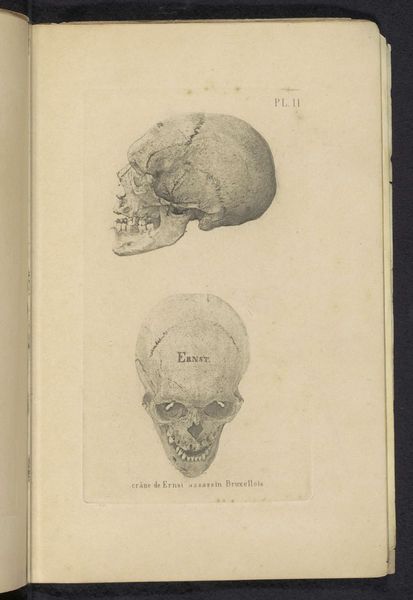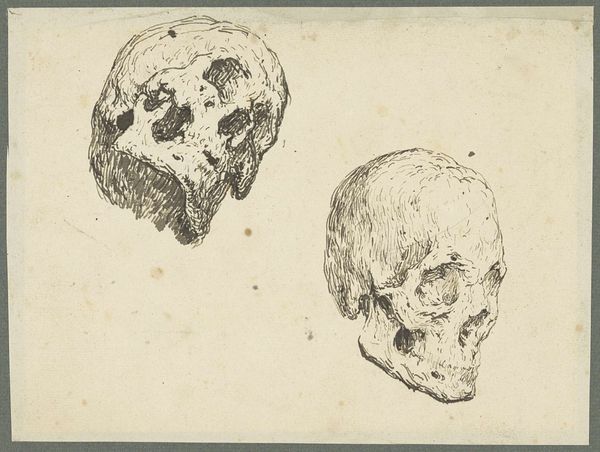
drawing, paper, pencil, graphite
#
portrait
#
pencil drawn
#
drawing
#
16_19th-century
#
paper
#
pencil
#
graphite
Copyright: Public Domain
Editor: This pencil drawing, “Skull” by Otto Scholderer, from the Städel Museum's collection, strikes me as both simple and profound. It’s stark, almost minimalist in its presentation. What do you see in this piece? Curator: I see more than just a memento mori; I see a critique of power structures. Skulls, historically, are symbols of mortality, yes, but mortality is not a great leveller. Consider how death differentially impacts marginalized communities, often as a result of systemic oppression and violence. Editor: So, you're saying it's not just about everyone dying eventually? Curator: Exactly. Whose deaths are mourned, whose are ignored, whose deaths are actively caused by social injustice? This skull, divorced from its body, becomes a blank canvas. We can project onto it questions about whose stories get told and remembered, and whose are erased. Does the artist acknowledge these inequities, or unwittingly perpetuate them? Editor: That’s a pretty heavy reading of a seemingly simple sketch. Does the medium—graphite on paper—play into that at all? Curator: Absolutely. The fragility of the medium underscores the precariousness of life, but also the ease with which narratives can be erased or rewritten. The "sketchiness" also reflects how some histories remain unfinished or inadequately rendered in art or official accounts. This becomes another facet of mortality— historical as well as individual. Editor: That makes me think about the incompleteness of archives and whose stories end up missing. Thanks, I didn't expect to view a simple skull through such a complex lens. Curator: And hopefully that reframing pushes one to reflect on how our perceptions of art are shaped by and can, in turn, reshape societal power dynamics.
Comments
No comments
Be the first to comment and join the conversation on the ultimate creative platform.
